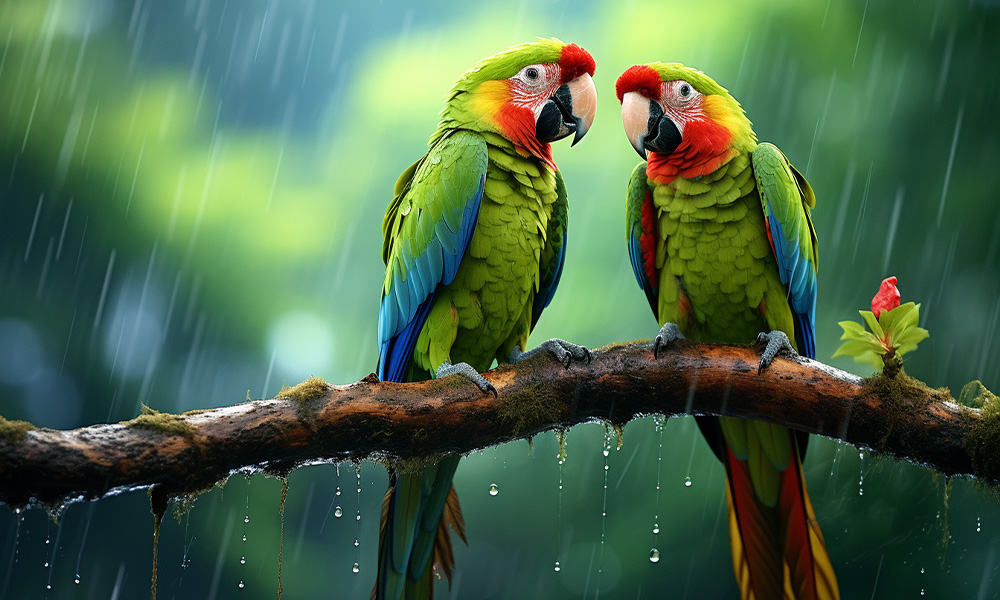A groundbreaking project that leverages artificial intelligence and eco-acoustics has emerged as a vital tool for safeguarding and monitoring the Green Macaw population in Costa Rica.
It will use 113 specialized devices known as “audiomoths” strategically deployed across an expansive territory spanning nearly 11,000 square kilometers, this initiative aims to capture the rich tapestry of sounds emitted by the Green Macaw, contributing valuable insights into habitat identification, feeding and nesting cycles, and other critical data points.
The data collected will enable an in-depth and multifaceted analysis, encompassing breeding seasons, as well as the prevalence of potential threats, among numerous avenues of research focus. This extensive study area encompasses approximately 22% of the national territory, along the northern and Caribbean regions of Costa Rica.
Mario Coto, the technical director of the National System of Conservation Areas (SINAC), emphasized the project’s innovative use of cutting-edge technologies.
He pointed out that “excellent opportunity to gather information about the Green Macaw during this initial phase, with the potential for broader application to other species in the future.”
The project
The project relies on eco-acoustic monitoring and data analysis driven by artificial intelligence, transforming sounds into a treasure trove of valuable information, not only for researchers but also for the Ministry of Environment and Energy (MINAE) and SINAC.
The initiative will be based on preexisting data shared by project partners like the Macaw Recovery Network and the Tropical Science Center. The meticulously positioned audiomoth devices are strategically placed at designated locations to capture the full range of acoustic data.
These devices are secured at heights of 20 to 25 meters within the canopy of mountain almond trees, a species revered as both a nesting and feeding site for the Green Macaws.
Additionally, each device is meticulously synchronized with a dedicated application that tracks its precise location. Approximately one year later, the amassed data is collected for processing and analysis through Huawei’s cloud infrastructure. This transformative journey, harnessing artificial intelligence, metamorphoses the raw data into actionable, comprehensible information.
Peng Yang, CEO of Huawei Technologies Costa Rica, lauded the project’s commitment to species conservation, especially for the Green Macaw, highlighting how information and communication technologies enhance efficiency in comprehending the ecological landscape, identifying potential risks, and fortifying natural preservation efforts.
This pioneering research project bears the endorsement of the National System of Conservation Areas (SINAC-MINAE) and the Macaw Recovery Network. The Macaw Recovery Network is entrusted with the responsibility of installing and retrieving the specialized data collection devices.






